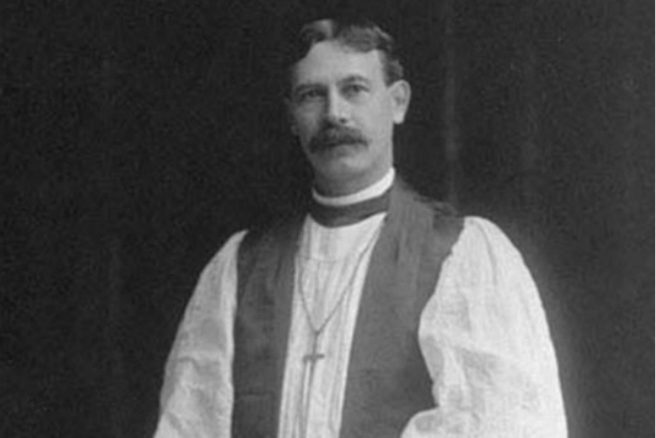How did Eustace Ziegler make his way to Alaska? His father’s well-schooled work ethic evidently set in early for this young man. He is said to have taken any sort of commission offered to him, from copying clamshells for a scientific treatise, to making portraits for friends, to painting copies of old masters for art dealers. He painted on the second floor of his father’s church, in a space which had been devoted to a reading room for Great Lakes sailors.
Ziegler’s pattern of summer labor, sketching when time and energy allowed, followed by winter painting, and taking what commissions presented themselves continued into the summers of 1907 through 1908.
And then there was a serendipity of Alaska for Ziegler, and he didn’t have to look far to fulfill his dreams of heading north: Peter Trimble Rowe, Bishop of the Episcopal Diocese of Alaska, was a longtime family friend.
At the time of Rowe’s appointment to the post, the Episcopal Church had only three missions in Alaska, two in the Interior and one in Point Hope on the Arctic Ocean. Settling in Sitka, but traveling undauntingly through the huge territory, Rowe quickly began to expand the presence of the church throughout Alaska. The huge influx of settlers brought by the Klondike gold rush and other precious metal strikes and the boom towns that began to grow up overnight in the waning years of the 19th century and beginning years of the 20th added fuel to the missionary fire. Rowe was looking for workers to carry on the church’s work.
Young Ziegler wrote to him in 1908, offering his services, Rowe was looking for men who could not only do the spiritual work of serving as missionaries, but who could live the rough and tumble lives of the pioneer’s territory.
Ziegler quickly received a positive reply, and he wasted no time in taking advantage of it. He would write years later, in a 1924 issue of the Alaska Churchman, a thinly veiled autobiographical account of his reactions to the bishop’s positive response.
Eustace had seen all three of his brothers join the Episcopal ministry and had clearly thought for some time about that possible path. But he certainly didn’t seem to be a man inclined for the city congregations nor for the city life.
Before the end of the year he was on his way to Alaska.















